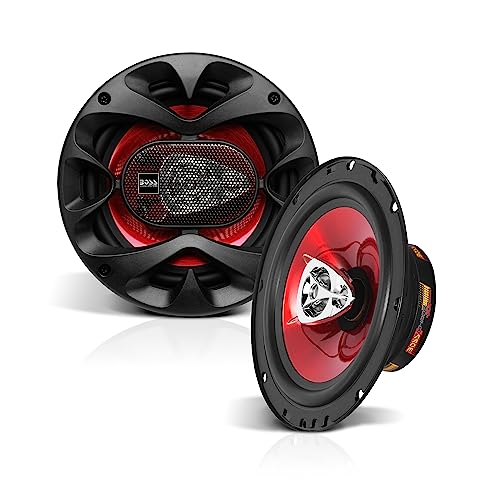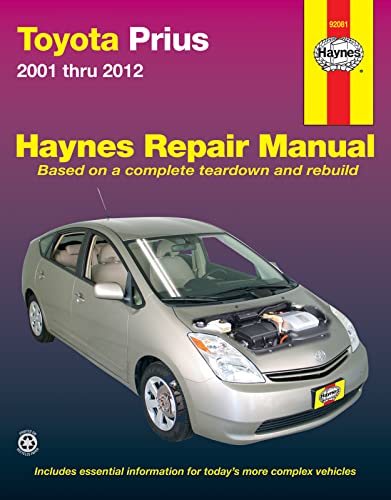As an Amazon Associate, I earn from qualifying purchases
Are you wondering if the Toyota 4Runner comes with all-wheel drive? If you’re looking for a reliable SUV that handles different road conditions with ease, this question is crucial.
Knowing whether the 4Runner has all-wheel drive can help you decide if it’s the right fit for your adventures, daily drives, or family trips. You’ll get clear answers about the 4Runner’s drive system, so you can make smart choices and feel confident behind the wheel.
Keep reading to discover what makes the Toyota 4Runner stand out when it comes to traction and control.
Toyota 4runner Drivetrain Options
The Toyota 4Runner offers several drivetrain options designed for different driving needs. Each option affects the vehicle’s performance on and off the road. Understanding these choices helps in selecting the right model for your lifestyle.
The 4Runner is known for its rugged build and strong capability. Its drivetrain options include rear-wheel drive and four-wheel drive systems. These provide various levels of traction and control.
Rear-wheel Drive Models
Some 4Runner models come with rear-wheel drive (RWD). This setup sends power to the rear wheels only. It provides good handling on dry roads and better fuel economy than four-wheel drive. RWD is suitable for everyday driving in cities and highways.
Four-wheel Drive Variants
Most 4Runner trims offer four-wheel drive (4WD). This system powers all four wheels. It improves traction on rough and slippery surfaces. 4WD is ideal for off-road adventures and tough weather conditions. Drivers can switch between two-wheel and four-wheel modes.
All-wheel Drive Availability
Toyota does not offer an all-wheel drive (AWD) system on the 4Runner. AWD provides constant power to all wheels and adjusts automatically. The 4Runner relies on its 4WD system for all-terrain performance. AWD is more common in crossovers, not in rugged SUVs like the 4Runner.

Credit: www.romeovilletoyota.com
Differences Between 4wd And Awd
The difference between Four-Wheel Drive (4WD) and All-Wheel Drive (AWD) often confuses many drivers. Both systems send power to all four wheels of a vehicle. Yet, they work differently and serve distinct purposes. Understanding these differences helps in choosing the right Toyota 4Runner model for your needs.
How Four-wheel Drive Works
Four-Wheel Drive sends power equally to all four wheels. Drivers usually turn it on or off manually. It often uses a low-range gear for tough terrain. This system is common in trucks and off-road vehicles. It offers strong traction on rough, slippery surfaces.
How All-wheel Drive Functions
All-Wheel Drive works automatically. It monitors wheel slip and sends power where needed. AWD adjusts power between front and rear wheels smoothly. It is always active or engages without driver input. AWD suits daily driving and light off-road use.
Pros And Cons For Off-roading
4WD excels in serious off-road conditions. It provides better control on mud, snow, and rocks. The downside is lower fuel efficiency and more complexity. AWD improves safety on wet or icy roads. It lacks the rugged capability of 4WD for deep off-road trails.
4runner Off-road Capabilities
The Toyota 4Runner is known for its strong off-road skills. It handles rough paths and tough conditions with ease. This SUV is built to travel places many vehicles cannot reach. Its design focuses on power, control, and durability.
Every part of the 4Runner supports off-road driving. From its tires to its engine, the 4Runner is ready for adventure. This makes it a favorite for outdoor lovers and explorers.
Trail And Terrain Features
The 4Runner offers special features for different trails. It has a Multi-Terrain Select system. This lets drivers choose the best setting for mud, sand, or rocks. The vehicle also includes Crawl Control. It helps keep a steady speed on steep or slippery hills. These tools make tricky paths easier and safer.
Suspension And Ground Clearance
The 4Runner has a strong suspension system. It absorbs bumps and keeps the ride smooth. Its high ground clearance helps avoid damage from rocks or debris. This means the vehicle can pass over obstacles without trouble. The suspension also supports heavy loads on rough roads.
Towing And Payload Limits
The 4Runner can tow trailers and carry heavy gear. It has a towing capacity up to 5,000 pounds. The payload limit allows for extra cargo inside the vehicle. This makes it useful for camping gear or tools. Strong towing and payload capacities add to its off-road usefulness.

Credit: www.pepperstoyota.com
Choosing The Right 4runner Model
Choosing the right Toyota 4Runner model matters for your driving needs and budget. The 4Runner offers different trims with unique features. Some focus on off-road capability, while others emphasize comfort and technology. Understanding these options helps you pick the best fit. Consider your priorities carefully. This guide breaks down key points to help you decide.
Trim Levels With Off-road Focus
Toyota 4Runner includes trims designed for tough terrain. The TRD Off-Road and TRD Pro trims offer advanced suspension and skid plates. These models have features like crawl control and locking differentials. They improve grip and control on rough trails. These trims suit drivers who enjoy outdoor adventures. They provide better handling in mud, rocks, and steep paths.
Technology And Safety Features
Technology varies across 4Runner trims. Higher trims offer touchscreen displays, navigation, and smartphone integration. Safety features include adaptive cruise control and lane departure alerts. These systems help keep you safe on highways and city roads. Entry-level models provide essential safety features. Upgraded trims add more comfort and convenience tech.
Price And Value Considerations
The price range of 4Runner trims is wide. Basic trims cost less and fit tight budgets. Off-road and tech-heavy trims demand higher prices. Think about what features you really need. Spending more might bring extra comfort and capability. Choose a model that balances cost with your must-have features. This ensures good value for your money.
Maintaining 4runner Drivetrain Systems
Maintaining the drivetrain system in a Toyota 4Runner is key for its long life and strong performance. The drivetrain includes parts that send power from the engine to the wheels. Regular care keeps these parts working well and prevents costly repairs.
Driving a 4Runner on rough roads or in tough weather puts stress on the drivetrain. Checking and fixing small problems early helps avoid bigger issues. Knowing how to care for the drivetrain helps owners enjoy smooth rides and reliable traction.
Regular Service Tips
Check the transfer case fluid every 30,000 miles. This fluid keeps gears lubricated and cool. Change the fluid if it looks dirty or smells burnt. Inspect the driveshaft and CV joints for wear or damage. Grease these parts when needed. Keep an eye on the differential fluid levels. Replace the fluid as recommended in the owner’s manual. Tighten any loose bolts or fasteners. Clean dirt and debris from drivetrain parts after off-road trips.
Common Issues And Fixes
Grinding noises may mean worn gears or low fluid. Inspect the transfer case and differentials quickly. Vibrations can come from unbalanced or damaged driveshafts. Check for bent or cracked parts and fix or replace them. Leaks under the vehicle might show worn seals or gaskets. Replace seals to stop fluid loss. Difficulty shifting into 4WD mode could mean a faulty shift motor or linkage. Clean or replace these components to restore function.
Enhancing Off-road Performance
Install a skid plate to protect the transfer case and differentials. Upgrade to high-quality fluids designed for heavy use. Use locking differentials to improve traction on rough terrain. Consider aftermarket suspension lifts to increase ground clearance. Regularly inspect and upgrade tires for better grip. Add a heavy-duty driveshaft for increased durability. These upgrades help the 4Runner handle tough trails with ease.

Credit: www.pinehursttoyota.com
Frequently Asked Questions
Do All Toyota 4runners Come With All-wheel Drive?
No, Toyota 4Runners mostly have four-wheel drive, not all-wheel drive.
What Is The Difference Between Awd And 4wd In 4runners?
AWD works automatically on all wheels; 4WD is manually controlled for tough terrain.
Can I Switch Between 2wd And 4wd In A Toyota 4runner?
Yes, many 4Runner models let you switch between 2WD and 4WD modes.
Is All-wheel Drive Better For Off-roading Than 4wd?
4WD is generally better for serious off-roading than AWD in Toyota 4Runners.
Which Toyota 4runner Trims Offer Four-wheel Drive Options?
Most Toyota 4Runner trims offer 4WD, especially TRD Off-Road and TRD Pro.
Does Awd Improve Fuel Efficiency In Toyota 4runners?
AWD usually uses more fuel than 2WD because it powers all wheels constantly.
Conclusion
Toyota 4Runners come with different drive options. Some models have all-wheel drive, while others use four-wheel drive. Both systems help with traction and handling. Choosing the right one depends on your needs and driving habits. All-wheel drive suits everyday roads and light off-road use.
Four-wheel drive works better for tough trails and rough conditions. Knowing these differences helps you pick the best 4Runner for you. Drive safe and enjoy your ride.
As an Amazon Associate, I earn from qualifying purchases


